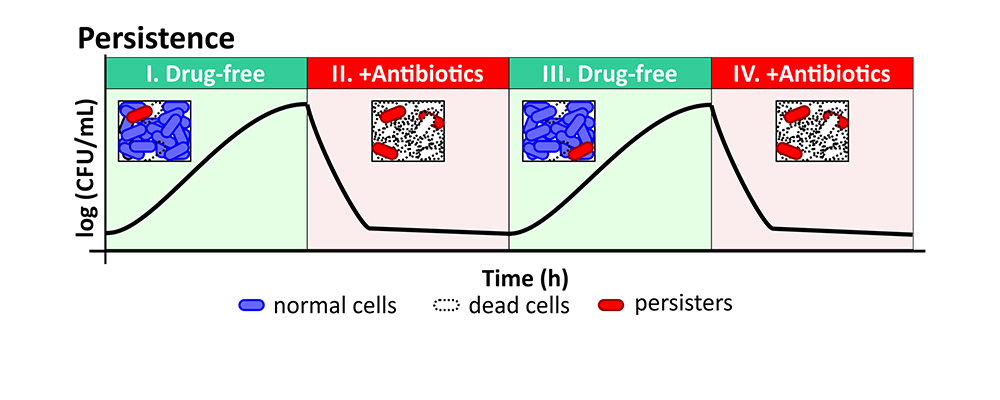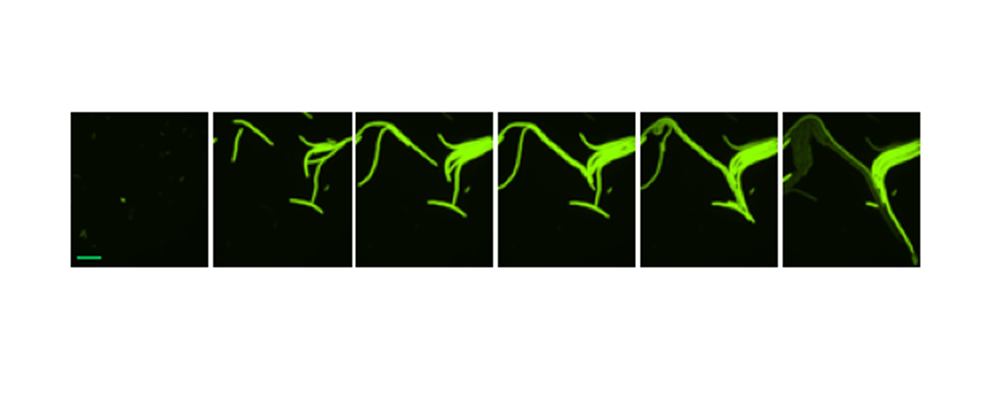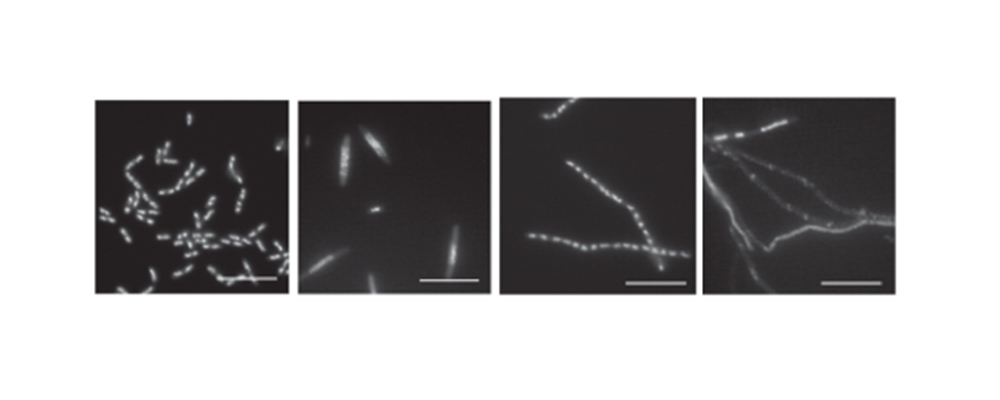Research
 Figure 1: Persisters survive antibiotic treatment and give rise to a new progeny with comparable antibiotic susceptibility.
Figure 1: Persisters survive antibiotic treatment and give rise to a new progeny with comparable antibiotic susceptibility. Figure 2: Escherichia coli persister recovering from a lethal dose of ofloxacin and forming a new progeny (1).
Figure 2: Escherichia coli persister recovering from a lethal dose of ofloxacin and forming a new progeny (1). Figure 3: Impact of antibiotics that target different cellular components on cellular and nucleoid morphology (1).
Figure 3: Impact of antibiotics that target different cellular components on cellular and nucleoid morphology (1).
Our research focuses on how bacteria respond to and survive antibiotic treatment. We are especially interested in bacterial persisters, which are rare cell types in a population that can tolerate lethal doses of antibiotics that kill their genetically identical kin. Unlike antibiotic resistant mutants, persisters have not acquired heritable genetic changes that allow them to grow in the presence of antibiotics. Rather, the persister phenotype is transient. Once the antibiotic is removed and cells resume growth, the phenotype is lost. As persisters are recalcitrant to antibiotic treatment, they can potentially fuel the development of relapsing chronic infections and antibiotic resistance.
Our major goal is to understand the triggers and survival strategies of bacterial persisters. We use genetic, biochemical, and systems biology approaches to investigate how fluctuations in the host environment impact persistence and how bacteria respond to and recover from treatment with antibiotics that target different cellular components. Contact us to find out more.
(1) Reference for figures 2 and 3: Enhanced antibiotic resistance development from fluoroquinolone persisters after a single exposure to antibiotic. Barrett, Theresa C; Mok, Wendy W K; Murawski, Allison M; Brynildsen, Mark P Nature communications 2019 Mar;10(1):1177